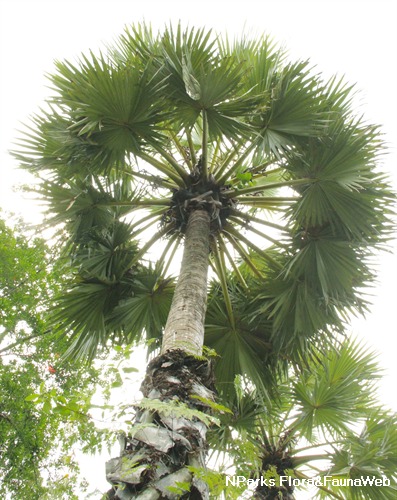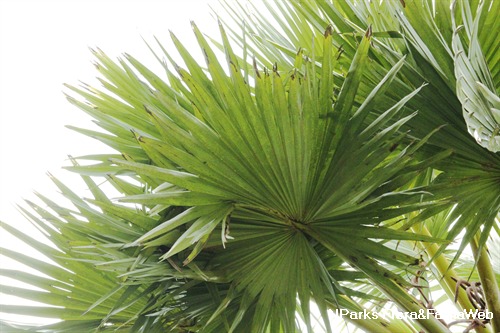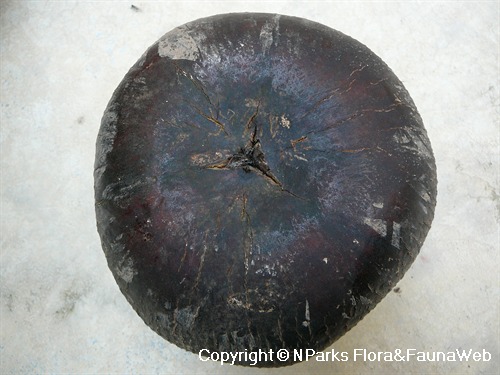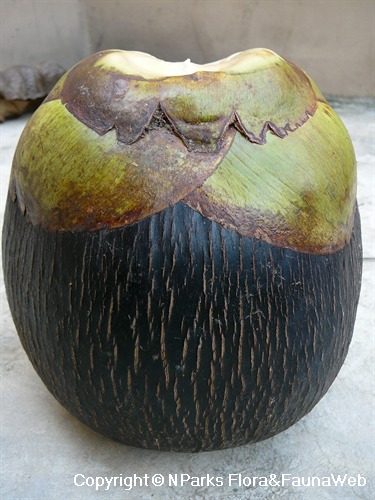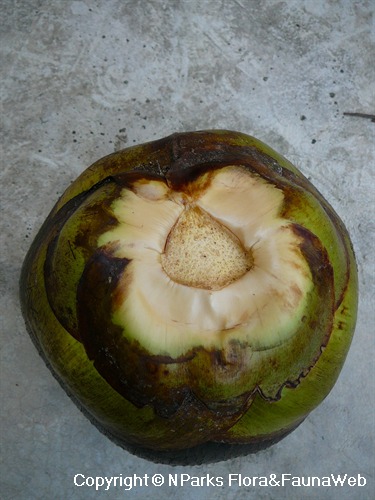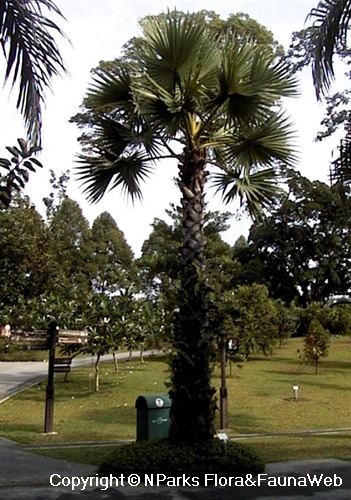
Back
Borassus flabellifer
| Family Name: | Arecaceae (Palmae) |
| Synonyms: | Borassus flabelliformis, Borassus Sundaicus |
| Common Name: | Palmyra Palm, Tah, Tai, Talouriksha Palm, Lontar, Toddy Palm, Wine Palm, Tala Palm, Doub Palm, Sugar Palm, Sea Coconut, Fan Palm, 糖棕 |
Name
Classifications and Characteristics
| Plant Growth Form | Palm (Solitary Habit) |
|---|
Biogeography
| Native Distribution | India, Thailand, Malaysia, Indonesia & China |
|---|
Description and Ethnobotany
| Trunk | Stem solitary, black, rough, ringed with old leaf scars, often bear a dead skirt of dried fronds beneath the crown; crownshaft absent. |
|---|---|
| Foliage | Fronds fan-shaped, rigid, greyish-green, large (up to 3 m across), induplicate (having its margins folded inwards); petiole semi-terete (having a circular transverse section), 0.6 to 1.2 m long, armed with hard, coarse, irregular spines along both edges. |
| Others - Plant Morphology | Growth Form:< A tall, robust, solitary palm with a hard, black trunk bearing a rounded crown of large, rigid, deeply-segmented, greyish-green, fan-shaped fronds. Flower: Inflorescences multi-branched, interfoliar, cream, shorter than the fronds; female inflorescences unbranched or branched with first order, up to 0.3 m long, covered with sheath-like bracts; male inflorescences massive, up to 2 m long, female flowers 2.5 cm in diameter; male flowers 2 cm in diameter. Fruit: Fruits broadly ovoid, 15 to 20 cm in diameter, 1.5 to 2.5 kg in weight, black, fibrous, fleshy, often fragrant, 1 to 3-seeded. |
| Cultivation | Though a very adaptable palm, it prefers an open, sunny aspect and well-drained, sandy soils near the tropical coast. It is fairly tolerant to drought and water-logging. Does not transplant well and greatly resent to disturbance, thus seeds are best sown in their permanent position. |
| Etymology | Its genus epithet comes from the Greek word 'borassos', which means 'an immature spadix of the date palm', in reference to the resemblance of immature flower spike of the date palm. Its species epithet means 'fan-bearing', in reference to its large attractive fan-shaped fronds. |
| Ethnobotanical Uses | Food (Fruit or Vegetable) Others: Food: Many parts of the plant are traditionally used as food. Fruits can be eaten raw, boiled or roasted. The pulp of the fruit is eaten by the natives and is often preserved and used for pickling. The sweet sap, which is obtained from tapping the inflorescences, can be drunk immediately, used to make sugar and used as a substitute to replace cane sugar. Wtih a 5 to 6 % alcohol content, the sap can be fermented for a few hours and later be converted into distilled ethanol or vinegar. Medicinal: There are numerous traditional medicinal uses that can be derived from all parts of the plant. Others: The fibres of young leaves has been tradtionally used to thatch and weave into delicate patterns. The fibre of its petioles can be used for weaving and matting. The bottom part of the trunk, which is the hardest and strongest part of the wood, is good for constructing buildings and bridges. The wood and leaves are also used as fuel. |
Landscaping Features
| Landscape Uses | Suitable for Roadsides |
|---|
Plant Care and Propagation
| Light Preference | Full Sun |
|---|---|
| Water Preference | Moderate Water |
| Plant Growth Rate | Moderate |
| Rootzone Tolerance | Waterlogged Soils (Drains Site), Drought Tolerant |
Foliar
| Mature Foliage Colour(s) | Green, Silver / Grey |
|---|---|
| Foliar Shape(s) | Palm Fronds (Fan / Costapalmate) |
| Leaf Area Index (LAI) for Green Plot Ratio | 2.5 (Palm - Solitary) |
Non - Foliar and Storage
| Trunk Type (Palm) | Solitary Habit, Aboveground |
|---|
Floral (Angiosperm)
| Flower Colour(s) | Cream / Off-White |
|---|
Fruit, Seed and Spore
| Mature Fruit Colour(s) | Black |
|---|
Image Repository
Others
| Master ID | 1309 |
|---|---|
| Species ID | 2602 |
| Flora Disclaimer | The information in this website has been compiled from reliable sources, such as reference works on medicinal plants. It is not a substitute for medical advice or treatment and NParks does not purport to provide any medical advice. Readers should always consult his/her physician before using or consuming a plant for medicinal purposes. |

